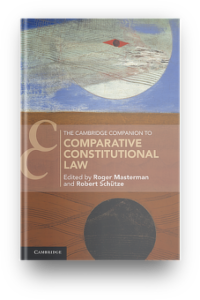The Constitution of India, adopted in 1949 and still in force today, was one of the earliest post- colonial Constitutions. Where the constitutional systems of most other newly independent states of the 1960s and 1970s have been marked by revolution, constitutional repeal and suspension, the Indian Constitution is remarkable for its durability. In fact, there are only a handful of states, with or without a colonial history, whose Constitutions have proved more resilient. The Indian Constitution is also the longest Constitution in the world, with the original draft consisting of 395 articles, eight schedules and a huge amount of administrative detail. There have also been 101 Amendments to the Constitution.
As the length of the document indicates, the Constitution is ambitious – in addition to setting up political institutions and delineating fundamental rights, its provisions are aimed at social reform. The transformative nature of the Constitution is perhaps best illustrated by its recognition of positive discrimination and various economic and social rights as directive principles of state policy. That the Constitution was innovative for its time and broadly successful in setting out a blueprint for the democratic government of a highly populous, heterogeneous state is beyond question. For these reasons, the Indian Constitution occupies an important space in studies of comparative constitutional law.
At the same time, studies of constitutionalism in India are critical of the fact that India’s successes – a reasonably well- functioning democracy of over sixty years’ standing, broad respect for the rule of law, a vibrant judicial system and rapid economic growth – have not served to transform the lives of the country’s most vulnerable people. Poverty remains a huge challenge for India, with recent data showing that, even on conservative estimates, about 30 per cent of the population lives below the poverty line. Furthermore, the lack of accountability of India’s large public sector has also arisen as a major concern – infrastructure in areas such as power supply is notoriously poor, and corruption is rife. This chapter examines key features of the Indian Constitution – from its drafting history to current challenges.
